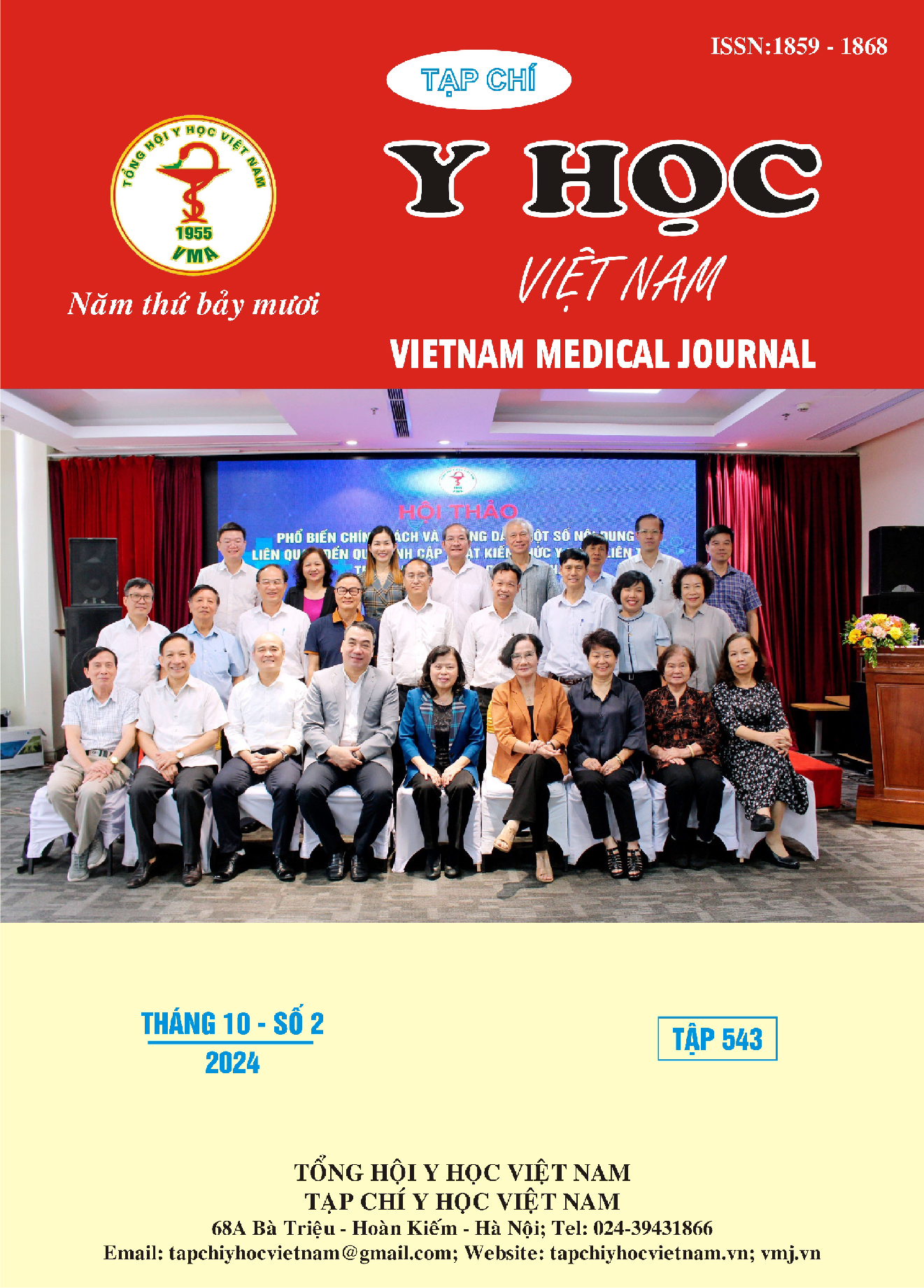STATUS OF ANTIMICROBIAL RESISTANCE OF COMMON GRAM-NEGATIVE BACTERIA CAUSING WOUND INFECTIONS AT MILITARY HOSPITAL 103 IN 2022
Main Article Content
Abstract
Objective: Study the status of antimicrobial resistance of common Gram-negative bacteria causing wound infections at Military Hospital 103 in 2022. Subject and methods: This was a cross-sectional study exploring the antimicrobial characteristics of common Gram-negative bacteria causing wound infections at Military Hospital 103 in 2022. Results: The total number of pathogens causing diseases isolated from wounds in 2022 was 195. Of these, there were 73 (37.4%) common Gram-negative bacteria. Klebsiella pneumoniae (45.2%), Pseudomonas aeruginosa (21.9%), and Escherichia coli (12.3%) were the most predominant bacterial species. Most bacteria in the study were isolated from the Surgery departments (39.7%) and the intensive care unit (32.9%). The percentage of multidrug resistance strains was the highest for K. pneumoniae (51.7%), P. aeruginosa (12.1%), E. coli (12.1%), and Enterobacter cloacae (12.1%). Gram-negative bacteria were the most resistant to ampicillin (100%), cefotaxime (79.2%), ciprofloxacin (76.7%), amoxicillin/clavulanic acid (73.1%), and trimethoprim/sulfamethoxazole (72.7%) and the least resistant to amikacin (29.0%), ertapenem (0%), and colistin (0%). Conclusion: The common Gram-negative bacteria isolated from wound specimens have a high rate of antimicrobial resistance and multidrug resistance. It was a serious threat to public health, requiring strictly managing antibiotics use, strongly implementing infection control measures, and creating effective treatment regimens.
Article Details
Keywords
: Wound infection, antibiotic resistance, multidrug resistance, bacteria
References
2. W. P. Sandar, et al., Wounds, Antimicrobial Resistance and Challenges of Implementing a Surveillance System in Myanmar: A Mixed-Methods Study. Trop Med Infect Dis (2021). 6(2).
3. Amy L. Leber, Clinical Microbiology Procedures Handbook, . 2016: ASM Press.
4. Clinical and Laboratory Standards Institute (CLSI), Performance Standards for Antimicrobial Susceptibility Testing 32nd ed. CLSI supplement M100. (2022).
5. Nancy A. Kassam, et al., Spectrum and antibiogram of bacteria isolated from patients presenting with infected wounds in a Tertiary Hospital, northern Tanzania. BMC Research Notes (2017). 10(1), 757.
6. Kabelo Gabriel Kaapu, et al., Prevalence and antibiotic profile of multidrug resistance Gram-negative pathogens isolated from wound infections at two tertiary hospitals in Limpopo province, South Africa: a retrospective study. Open Journal of Medical Microbiology (2022). 12(4), 141-155.
7. Mohammedaman Mama, Alemseged Abdissa, and Tsegaye Sewunet, Antimicrobial susceptibility pattern of bacterial isolates from wound infection and their sensitivity to alternative topical agents at Jimma University Specialized Hospital, South-West Ethiopia. Annals of Clinical Microbiology and Antimicrobials (2014). 13(1), 14.
8. F. A. Nobel, et al., Isolation of multidrug resistance bacteria from the patients with wound infection and their antibiotics susceptibility patterns: A cross-sectional study. Ann Med Surg (Lond) (2022). 84, 104895.


